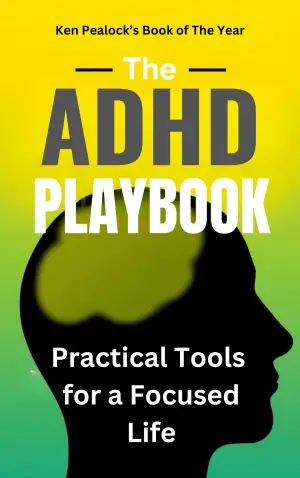Unlocking Hidden Potential: A Review of Adam Grant’s Latest Book
Have you ever felt like you’re running into a wall in your career or personal growth? I know I have. Sometimes, it feels like no matter how hard you try, you just can’t break through. That is exactly why Hidden Potential: The Science of Achieving Greater Things by Adam Grant piqued my interest. As a Wharton professor and bestselling author, Grant has a flair for challenging the status quo and pushing us to rethink our assumptions about talent and achievement—and he does so with engaging warmth in this enlightening read.
In Hidden Potential, Grant tackles the pervasive myth that success is primarily the result of natural talent. We’ve all heard tales of child prodigies or sports legends who seem to excel effortlessly. Yet, as Grant expertly illustrates, these narratives often overshadow individuals who’ve had to grapple with their potential through sheer determination. I found his examples of late bloomers—like R.A. Dickey, who reinvented himself as a baseball pitcher, and José Hernández, who transformed his life from a migrant farmworker to a NASA astronaut—particularly moving. They stand as testaments to the idea that our abilities can be cultivated and expanded over time, as long as we are willing to put in the effort.
One of my favorite sections delves into what Grant terms “character skills,” the attributes that enable us to thrive beyond innate talent. He describes how embracing discomfort and actively seeking challenges can pave the way for growth. The story of Sara Maria Hasbun, who learned nine languages by stepping far outside her comfort zone, resonated deeply with me. It reminded me of the importance of persistence and vulnerability in the learning process, echoing Ted Lasso’s famous line: “If you’re comfortable, you’re doing it wrong.”
Grant also introduces the concept of “scaffolding,” explaining how our environments and support systems shape our potential. This resonated with me as I reflected on my own life—no one truly rises on their own. The inspiring story of the “Golden Thirteen,” the first Black officers in the U.S. Navy during World War II, showcases the power of collective support. Their training success was built on encouragement, accountability, and mutual learning—a reminder that leaning on others can fortify our own strength.
While Grant’s writing style is incredibly engaging, balancing rigorous research with approachable storytelling, I occasionally found myself wishing for tighter editing; certain concepts felt reiterated a little too frequently. However, this repetition may actually reinforce his critical messages, nudging us (me, especially) to embrace the awkward, ongoing journey of self-improvement.
Hidden Potential isn’t just for those longing for personal growth; it’s a must-read for educators, leaders, and parents who wish to nurture potential in others. Grant argues for redesigning educational and professional systems to recognize and foster untapped talent, drawing on insightful examples like the inclusive practices of Finnish schools.
By the end, I came away feeling hopeful and invigorated: our capabilities are not fixed; they’re waiting to be discovered. With the right mindset and support, we can all reach heights we never thought possible. If you’ve ever doubted your abilities or felt stunted by fear, Grant’s work offers not just insights but a roadmap to unlock your hidden potential.
So, if you’re ready to confront your comfort zone and embrace growth, I wholeheartedly recommend Hidden Potential. It just might provide the push you need to take that next leap—perhaps even into a beginner’s improv class, as I’m now inspired to do!
Discover more about Hidden Potential: The Science of Achieving Greater Thin… on GoodReads >>











